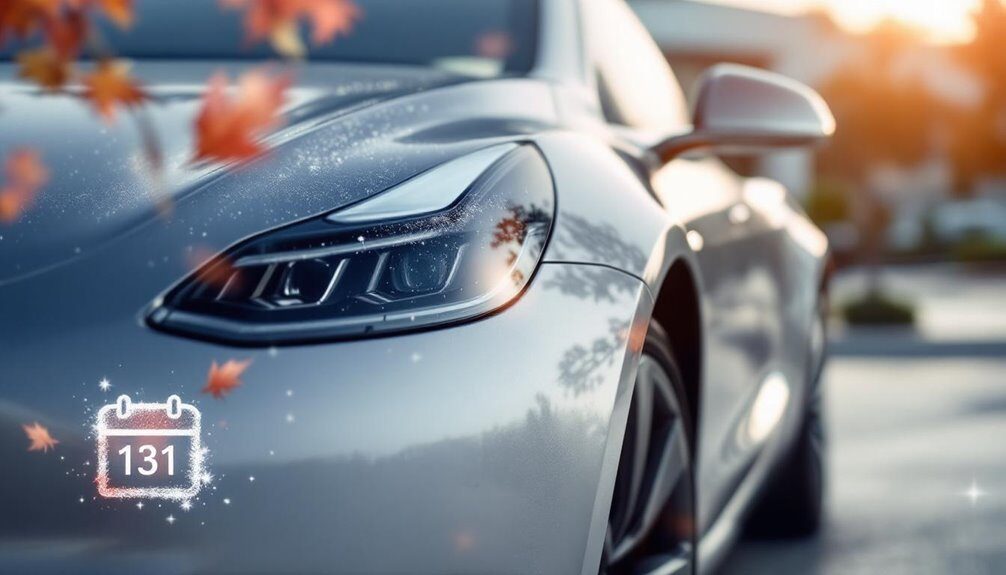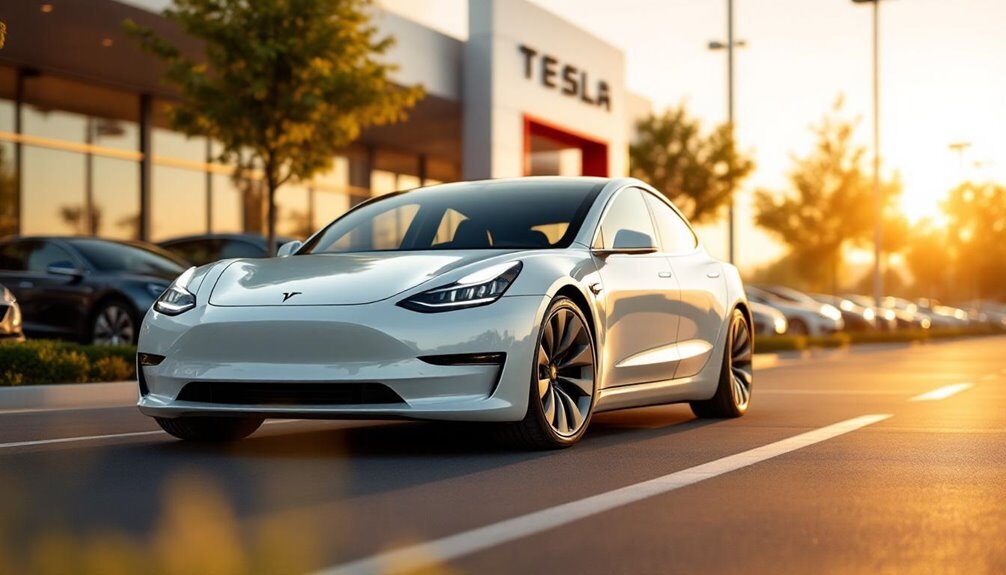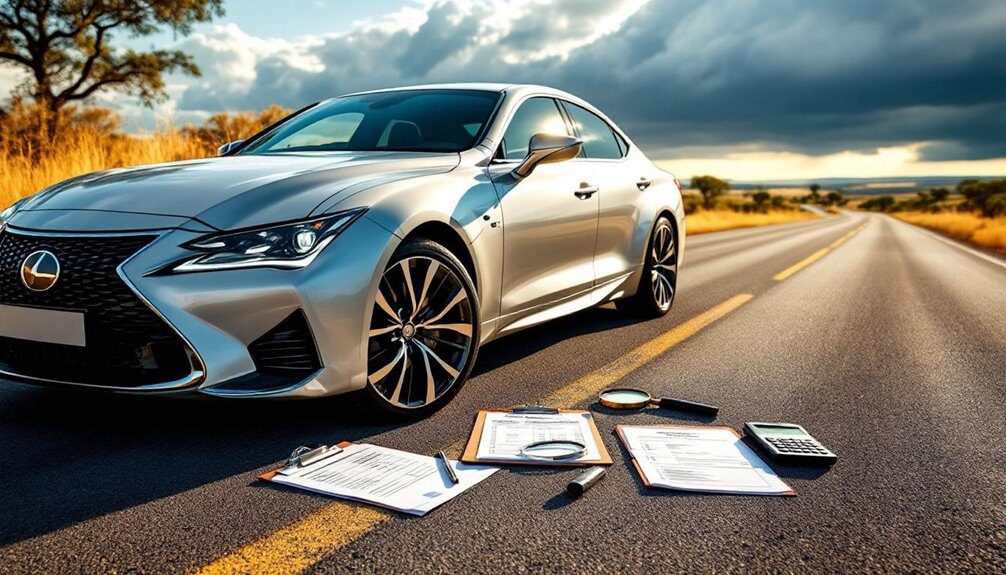You’ve got solid options under R200,000 right now—the Toyota Vitz, Suzuki S-Presso, and Tata Tiago all punch above their weight as city cars that won’t drain your wallet. The Vitz starts at R178,800 with manual options, whilst the Tata Tiago gives you a beefier 1.2-litre engine for just R184,900. They’ll sip fuel around 4.5–5.3 L/100km in real driving. Stick with dealer servicing to keep that efficiency intact. There’s actually way more subtlety here worth investigating.
Top Budget-Friendly Models Under R200,000
If you’re scrounging around for a new small car that won’t drain your bank account, the budget segment’s got some genuinely tight options.
The Toyota Vitz kicks things off at R178,800—your baseline for cheap. Right on its heels sits the Suzuki S-Presso at R178,900, basically identical but costs a few quid more for literally the same engine specs. Want something with actual grunt? The Tata Tiago jumps to R184,900 with a beefier 1.2-litre engine that actually delivers more power. The Tata Tiago is positioned for first-time buyers looking to enter the market. Then there’s the Suzuki Celerio holding steady at R188,900, and finally the Renault Kwid 1.0 Life creeping up to R196,999. All five pack five-speed manuals or automatics, perfect for first-timers and city dwellers who need practical, no-fuss transport. For routine maintenance and ongoing support, first-time car owners should consider partnering with a dealership that offers scheduled service offerings to keep their vehicles running smoothly. Establishing a relationship with a trusted dealer ensures comprehensive maintenance and repair services are readily available when you need them. The Renault Kwid holds the distinction of being the most affordable passenger car in South Africa, edging out its competitors by mere rands.
Fuel Efficiency Comparison Across Entry-Level Vehicles
When you’re shopping for cheap small cars, fuel economy isn’t just some boring spec—it’s literally money staying in your pocket every time you fill up.
The Suzuki Celerio automatic absolutely crushes it at 4.2 L/100km, matching the Toyota Vitz automatic, whilst competitors like the Hyundai Grand i10 and Nissan Magnite guzzle noticeably more at 5.2 and 5.3 L/100km respectively.
Real-world driving? You’ll feel the difference in your wallet, especially if you’re hammering the commute daily. Driving a more fuel-efficient car saves hundreds and thousands of Rands per annum, so choosing between these models could mean significant long-term savings over the life of your vehicle.
Suzuki Celerio’s Efficiency Lead
It’s basically tied for the best fuel economy in South Africa’s entry-level hatchback segment at a claimed 4.2 L/100km—same as the Toyota Vitz, mind you. The Celerio’s 1.0L Dualjet engine with variable valve timing makes this happen.
Meanwhile, the Swift, Dzire, and Espresso? They’re stuck at 4.4 L/100km. Not terrible. Just not as efficient.
What gives the Celerio its edge? Lightweight design, aerodynamic shape, and Auto Stop-Start technology that cuts idle fuel waste. The transmission doesn’t matter much—manual or AMT deliver identical claimed consumption. Rolling resistance tyres seal the deal.
For budget-conscious drivers, this efficiency means lower fuel bills month after month. That adds up fast. Practically matters when every rand counts. Contact a service appointment scheduling provider like Autobahn Auto in Paulpietersburg to explore quality used vehicles where fuel efficiency translates directly to long-term savings for buyers.
Real-World Consumption Comparisons
Claimed fuel economy? It’s one thing. Real-world driving? Totally different kettle of fish. You’re sitting in Paulpietersburg traffic, air con blasting, and suddenly that shiny 5.0 L/100 km rating feels like fiction.
Here’s what actually happens on South African roads:
| Model | Engine | Real-World L/100km |
|---|---|---|
| Toyota Vitz | 1.0L, 3-cyl | 4.5–5.0 |
| Suzuki S-Presso | 1.0L, 3-cyl | 5.2–5.5 |
| Tata Tiago | 1.2L, 3-cyl | 5.0–5.3 |
| Renault Kwid | 1.0L | 5.0–5.4 |
| Hyundai Grand i10 | 1.0L, 3-cyl | 5.0–5.5 |
Stop-start city driving kills efficiency. Your tyre pressure drops. You forget servicing. Suddenly you’re burning fuel like it’s water. Transmission type matters too—manuals win, automatics lose slightly. The Vitz stays competitive. Suzuki edges ahead sometimes. It’s marginal stuff, honestly. Regular oil and filter changes keep your engine running at peak efficiency. Keeping up with scheduled maintenance services at your local service centre ensures your vehicle maintains its fuel efficiency ratings and prevents performance degradation over time.
Engine Performance and Transmission Options
You’re looking at compact three-cylinder engines that basically all play the same game: 1.0-litre mills cranking out roughly 49–52 kW, though the Tata Tiago muscles in with a 1.2-litre punching 63 kW—yeah, there’s actually a difference if you care about not feeling like you’re driving a golf cart uphill.
On the transmission front, you’ve got manuals dominating the budget segment (they’re cheaper, simpler, done), but some models throw in a 5-speed automatic option if you want convenience over savings.
The real tension here? That manual keeps your costs low and gives you better control in traffic, whilst the auto trades affordability for lazy-foot city driving.
Compact Three-Cylinder Engines
When you’re shopping for the cheapest small cars in South Africa, you’re basically shopping for three-cylinder engines—full stop. These compact powerplants are the backbone of the budget segment. You’ve got your standard 1.0-litre petrol engines dominating models like the Toyota Vitz, Suzuki S-Presso, and Tata Tiago. The Tiago throws in a 1.2-litre option if you want slightly more grunt.
Here’s the thing: these engines aren’t trying to impress anyone. They’re built for reliability and easy maintenance. Low fuel consumption? That’s their whole identity. Paired with lightweight chassis, they’re laser-focused on urban efficiency. They’ll get you around the city without emptying your wallet at the petrol station. When maintenance time comes around, finding replacement parts for these models is straightforward thanks to extensive availability and competitive pricing options. For more complex issues, professional engine repairs can help maintain optimal performance and longevity. That’s it. That’s the pitch.
Power and Torque Comparison
Power figures in the budget segment don’t exactly set hearts racing. You’re looking at 49 kW from the Toyota Vitz, Suzuki S-Presso, and Suzuki Celerio—basically entry-level city slickers. The Tata Tiago bumps things up with 63 kW, whilst the Proton Saga leads the pack at 70 kW.
Torque tells a similar story. Most compact engines deliver 89 Nm, but the Tiago manages 113 Nm and the Saga hits 120 Nm. That extra grunt matters when you’re merging or hauling cargo.
| Model | Power (kW) | Torque (Nm) |
|---|---|---|
| Toyota Vitz | 49 | 89 |
| Tata Tiago | 63 | 113 |
| Proton Saga | 70 | 120 |
Transmissions vary. Most offer 5-speed manuals; automatics cost extra. Nothing revolutionary here—just practical.
Manual Versus Automatic Transmission
Fit a manual transmission to your budget car, and you’re looking at the cheapest entry point into the segment. Toyota Vitz, Suzuki S-Presso, and Tata Tiago all offer 5-speed manuals starting under R190,000. Want automatic? You’ll pay R10,000 to R20,000 extra. The S-Presso’s automated manual splits the difference—manual durability meets automatic convenience without breaking the bank.
Here’s the reality: manuals demand active gear selection in stop-and-go traffic. Automatics remove clutch engagement hassle. Both camps use proven technology, not experimental nonsense. Your choice hinges on city driving patience versus premium pricing. Manual means cheaper entry. Automatic means less grinding through rush hour. Neither’s revolutionary, but they get the job done.
Safety Features and Technology Integration
Because you’re spending serious money on a small car, you’d better know what’s actually protecting you when things go wrong. Here’s the real deal: safety tech separates the winners from the also-rans.
Your budget options aren’t skimping on protection anymore. Most new small cars target at least a 4-star NCAP rating. The Tata Nexon? It snagged a full 5-star Global NCAP rating in 2024. That’s legit.
Most new small cars hit at least a 4-star NCAP rating. The Tata Nexon? Full 5-star Global NCAP in 2024. That’s legit.
What you’re actually getting:
- 6 airbags standard on the Tata Nexon and Toyota Starlet
- Electronic stability control and blind-view monitors keeping you honest
- ISOFIX mounts for the children’s car seats
- Rear park distance control so you don’t embarrass yourself reversing
The Chery Lepas L8 coming in 2026 will push even harder—up to seven airbags. Adaptive cruise control. Lane-keeping assistance. Budget doesn’t mean you’re gambling with your life anymore. Pairing modern safety systems with regular brake maintenance ensures your vehicle stops reliably when you need it most. Beyond your own maintenance routine, professional tyre services keep your contact with the road optimal and your stopping power effective.
Body Style Choices for Different Lifestyle Needs
When you’re hunting for a small car, the body style you pick matters just as much as the price tag. You’ve got options. Hatchbacks? Compact and nimble—perfect if you’re dodging Johannesburg traffic.
Saloons offer more boot space and comfort for family road trips.
SUV-inspired crossovers give you that raised-up feeling without breaking the bank.
Then there’s minivans if you’re hauling crew around.
Each style fits different lives. Urban solo commuters dig hatchbacks. Growing families? Saloons work.
Active types wanting versatility lean towards compact SUVs.
The point: your lifestyle isn’t generic. Neither’s your car choice. Pick what actually fits how you live, not what some dealer pushes.
Market Trends and Long-Term Value Considerations
You’ve picked your body style. Now here’s the reality: the market’s shifting, and it’s worth grasping why.
New car sales jumped 22.5% in 2025—the strongest volumes since 2014. But here’s the thing: used vehicles are still where budget-conscious buyers are landing. Affordability pressures aren’t disappearing anytime soon.
What’s driving long-term value?
- Toyota and Suzuki dominance – affordable, reliable small cars that hold their worth
- Fuel efficiency matters more – currency volatility and inflation make every litre count
- Compact SUVs trending – practicality beats pure economy in consumer preferences
- Quality transparency – dealers who prove reliability build customer loyalty
The small car segment’s growing modestly—projected at just 0.52% annually through 2030. That means competition’s fierce, but reliability still wins. Choose wisely; your wallet’s future depends on it.




